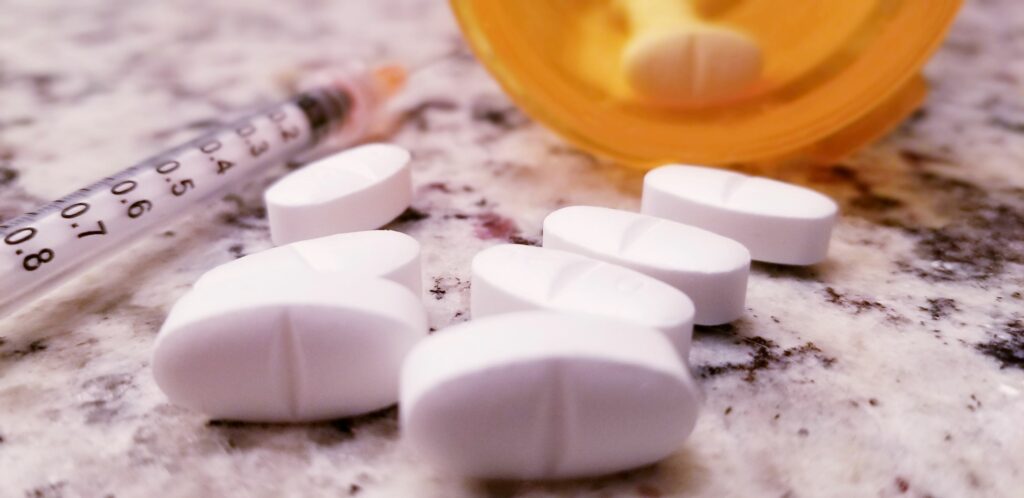Opioid addiction and substance-related disorders are on the rise globally, with the United States recording over 90,000 opioid overdose deaths in the year 2020 alone.[1] Opioid addiction and overdose are treatable, and medications like buprenorphine are highly effective in treatment. But, only about 20-40% of patients with opioid use disorder (OUD) receive treatment or medication.[2] Let us discuss how Remote Patient Monitoring could be used for opioid addiction treatment.
Currently, interest in telehealth and remote clinical practice has gained popularity, primarily due to social distancing and the fear of hospital visit-related COVID-19 infections. Remote patient monitoring through telehealth is now becoming an effective alternative to in-person opioid addiction treatment (OAT). It has far more outreach by improving OAT in rural and remote areas, which normally don’t have access to specialized care providers.
Despite the increasing use of telehealth, overdose deaths to continue to increase even as the pandemic subsides.[3] This can be attributed to the provider’s inability to recognize danger signs associated with substance abuse and overdose. While more care models for opioid addiction treatments continue to be conceptualized, incorporating remote patient monitoring with tracking of symptoms will give physicians additional data to recognize signs of drug misuse than merely conducting a virtual interview alone.
What are the RPM devices used for opioid addiction treatment?
Blood pressure monitoring
One of the most successful telehealth approaches has been tracking blood pressure and monitoring vital signs, with the exchange of data between patient and provider. Information can be transmitted to the care provider through the web, emails, text messages, and video consultation. Patients need to be trained on lifestyle, risk factors, and appropriate use of medications. With the vast diffusion of mobile apps, more direct involvement from the patient can be expected with the supervision of a multidisciplinary care team.[4] In one study, about 94% of patients completed data collection successfully using at-home blood pressure monitors and sending readings back to the healthcare provider’s office.[5]
Some studies have used the latest state-of-the-art technologies for blood pressure monitoring. One such study developed a wireless blood pressure measurement, transmission, storage, and monitoring system that employed a Bluetooth-equipped sphygmomanometer that could be paired to the patient’s smartphone to monitor vitals of patients who suffered from OUD and were undergoing treatment.[6] Another study successfully used a tablet device coupled with a blood pressure cuff and an oxygen sensor to monitor blood pressure at home for patients enrolled in study.[7] Such tools can be used in clinical practice for telehealth to monitor patient vitals in a remote setting. This can alert the physician’s office of any untoward changes in blood pressure that may indicate overdose during opioid use.
Pulse oximetry to monitor oxygen saturation (SPO2)
Another non-invasive method to measure oxygen saturation in the blood is by using a pulse oximeter. Pulse oximetry is instrumental as it can estimate the degree of hypoxia in arterial blood. Hypoxia is one of the most serious threats to human life and one of the most significant factors that affect chances of survival is early detection. SpO2 measurements reflect the true physiological states of the patient, and early scores determine the correct path for treatment. Conversely, a low score can quickly trigger the activation of rescue teams.[8]
Tracking respiratory rate through wearable devices
Measuring the respiratory rate is of high clinical value, and the enhanced interest in wearable devices and digital health is a promising opportunity. Wearable devices can collect information and compute values even when the user is asleep, thereby reducing any manipulation by the user. Most commercial wearable devices use photoplethysmography (PPG) that measures at a single point of contact like the wrist or fingers. Wristbands are the most commonly available market, which can broadly be classified as medical or fitness. Devices can be used to monitor and prevent lethal outcomes of overdoses and prevent patients from misusing opioids.
DrKumo can help
DrKumo’s RPM technology helps monitor vital signs through real-time monitoring and provides immediate medical intervention in case of potential signs of opioid overdose. Some of these technologies include an at-home blood pressure monitor, pulse oximeter, and tracking of the respiratory rate. With continued assessment of opioid overdose and better treatment of opioid-reversing drugs, the benefits of remote patient monitoring in opioid addiction treatment can be achieved by incorporating RPM in a patient-centric, holistic care approach.
Read more: Top 3 Benefits of Remote Patient Monitoring in Solving the Opioid Crisis
Conclusion
The pandemic has revolutionized the way healthcare has been functioning. Telehealth was a rarely heard concept before COVID-19, but the pandemic forced most countries to adapt to telehealth, and routine medical care was almost exclusively made virtual. Although telehealth has helped maintain continuity of opioid addiction care, there are still limitations as to the timely and correct diagnosis of drug misuse and overdose. A few avenues to explore telehealth and remote patient monitoring in the light of managing opioid addiction treatment is through hybrid models of in-person and remote visits that will offer some balance to both providers and patients.
References:
- Products – Vital Statistics Rapid Release – Provisional Drug Overdose Data. https://www.cdc.gov/nchs/nvss/vsrr/drug-overdose-data.htm. Accessed December 24, 2021.
- Lembke A, Chen JH. Use of Opioid Agonist Therapy for Medicare Patients in 2013. JAMA Psychiatry. 2016;73(9):990-992. doi:10.1001/JAMAPSYCHIATRY.2016.1390
- Issue brief: Nation’s drug-related overdose and death epidemic continues to worsen. https://www.ama-assn.org/system/files/issue-brief-increases-in-opioid-related-overdose.pdf. Accessed December 24, 2021.
- Omboni S, McManus RJ, Bosworth HB, et al. Evidence and Recommendations on the Use of Telemedicine for the Management of Arterial Hypertension. Hypertension. 2020:1368-1383. doi:10.1161/HYPERTENSIONAHA.120.15873
- Lu JF, Chen CM, Hsu CY. Effect of home telehealth care on blood pressure control: A public healthcare centre model. J Telemed Telecare. 2019;25(1):35-45. doi:10.1177/1357633X17734258
- Kim BJ, Park JM, Park TH, et al. Remote blood pressure monitoring and behavioral intensification for stroke: A randomized controlled feasibility trial. PLoS One. 2020;15(3). doi:10.1371/JOURNAL.PONE.0229483
- Hoppe KK, Williams M, Thomas N, et al. Telehealth with remote blood pressure monitoring for postpartum hypertension: A prospective single-cohort feasibility study. Pregnancy Hypertens. 2019;15:171. doi:10.1016/J.PREGHY.2018.12.007
- Lam T, Nagappa M, Wong J, Singh M, Wong D, Chung F. Continuous pulse oximetry and capnography monitoring for postoperative respiratory depression and adverse events: A systematic review and meta-analysis. Anesth Analg. 2017;125(6):2019-2029. doi:10.1213/ANE.0000000000002557











